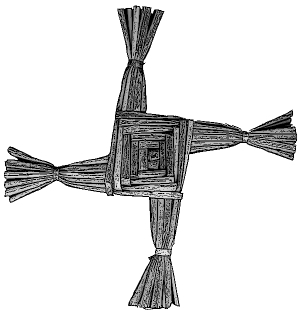Gaelic festival of Imbolg and Saint Brigid's Day

February 1st marks the traditional day of the Gaelic festival of Imbolc or Imbolg. It is also known as Saint Brigid’s Day (Irish: Lá Fhéile Bríde, Scottish Gaelic: Là Fhèill Brìghde, Manx: Laa’l Breeshey). Most commonly it is held on 31 January–1 February. It is a Cross Quarter Day, midpoint between the Winter Solstice and the Spring Equinox. Historically it widely observed throughout Ireland (Irish: Éire), Scotland (Scottish Gaelic: Alba) and the Isle of Man (Manx: Mannin). It is one of the four Gaelic seasonal festivals, along with Bealtaine/Boaldyn, Lughnasa/Lúnasa/Lùnastal/Luanistyn and Samhain/Sauin.
The time of Imbolc was a time to celebrate the Celtic Goddess Brigid. She was said to be the daughter of the Dagda, one of the principle gods in the Celtic pantheon, and the wife of Bres, a half-Fomorii God. It has been suggested that it was Christianised as a festival of Saint Brigid. On Imbolc Eve, Brigid is said to visit virtuous households and bless the inhabitants, although there are some variations in the traditions undertaken to mark the day across the Gaelic lands.
The idea of Brigid the Celtic Goddess Brigid transposing into the Christian Saint Brigid is not universally accepted. With some holding to the belief that the 5th century Saint Brigid of Kildare or Brigid of Ireland ( c. 451 – 525), although sharing the name of the Celtic Goddess, was an early Irish Christian nun, abbess, and foundress of several monasteries. Brigid's crosses are associated with Saint Brigid's Day. Many rituals are linked with the making of the crosses and with where they are placed as a protection against any kind of harm. Many of the superstitions connected with Brigid's cross appear to point to it pre-dating Christianised Ireland. Giving a further indication of the merging of the pagan Celtic Feast Day of Imbolg and later Christian traditions.
Here is a link to a previous article in Transceltic: "Brigid - Celtic Goddess To Christian Saint - The Feast of Imbolg"
Image above: Brigid's Cross.





